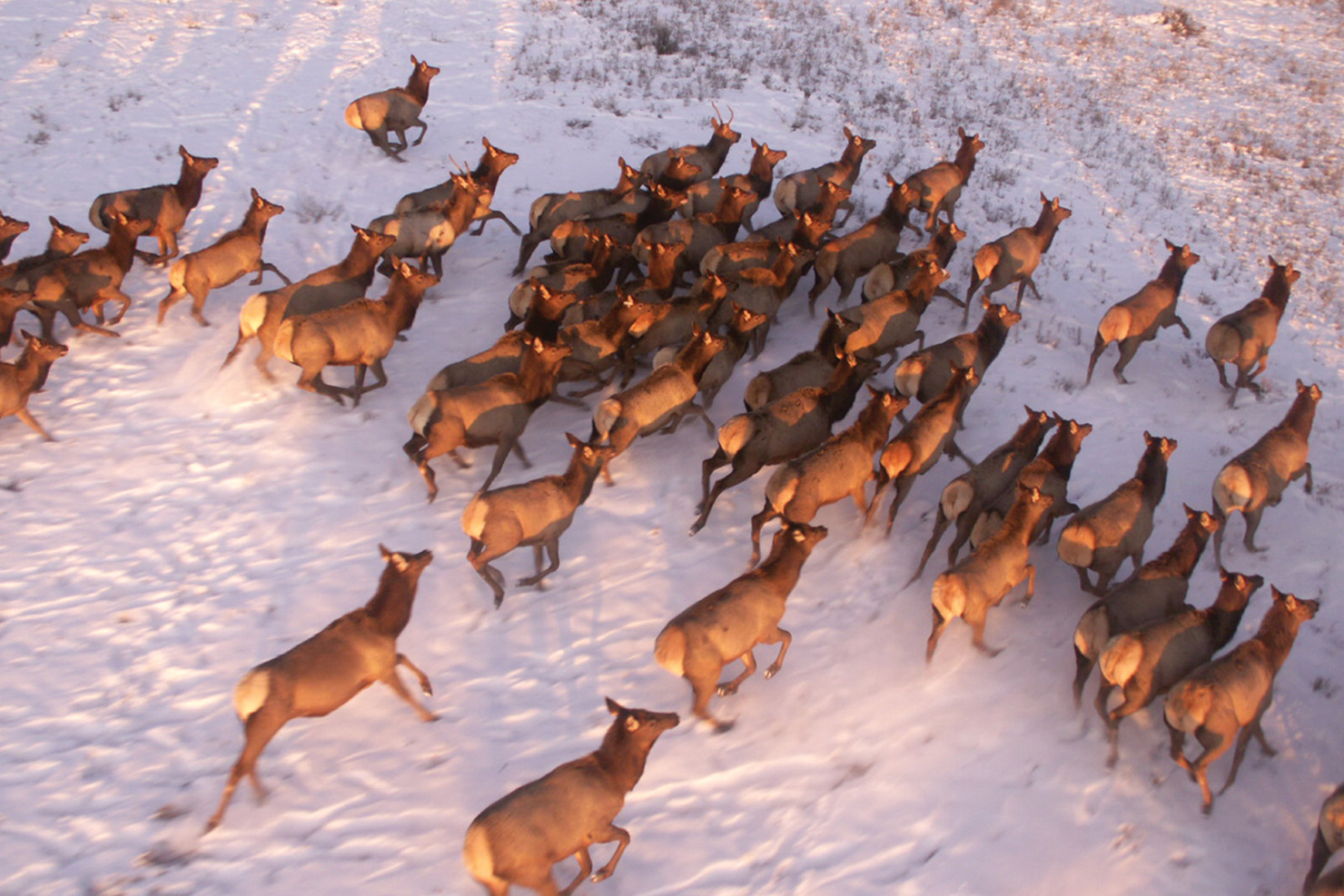The fall and early winter of 2017-2018 has been a frustrating one for elk hunters, particularly those that like to harvest a late-season cow. Because of the unseasonably warm and dry weather pattern this region is experiencing, the Southern Ute Wildlife Division did not see elk migrate onto tribal land winter ranges like they normally do. “The majority of elk that hunters pursue on the reservation are migratory, spending their summers on lush high-country ranges 20 – 50 miles north of us. These elk only return to tribal lands if enough snow accumulates to push them down to us. If snow levels drop to 7,000 or 8,000 ft. in late November or early December, then that generally translates to seeing large herds of elk streaming down to the reservation,” Southern Ute Wildlife Biologist Aran Johnson said. “During a year like this, where snow hasn’t covered anything but the highest peaks, then elk only move as far as they have to. Most of the elk that we would expect to see on the reservation are still stalled out at 10,000 ft. or higher this winter.”
“Our aerial game survey conducted in mid-January confirmed what we already knew from our field observations and hunter reports, that elk numbers were very low. During a typical year our survey will document 2,500 – 3,000 elk on the East Side of the reservation (from the HDs east to Archuleta Mesa). This year we recorded only 1,250 elk in that area,” Johnson said. “It’s important to note that the lack of elk on the reservation this winter doesn’t signify a reduced herd overall, it’s just that access to those animals on the reservation was impacted by weather conditions.”
Last winter’s survey recorded nearly 4,000 elk on the East Side of the reservation, which was an all-time high. The elk are out there, they simply didn’t have a reason to complete their full migration to tribal lands this fall.
“I can’t yet definitively say how tribal member hunters fared on cow elk in 2017 because we don’t have a mandatory validation for cow elk. I can say that the cow elk hunters I talked to this fall were pretty frustrated and that’s understandable,” Johnson said. “It’s been a number of years since we’ve seen a ‘normal’ elk migration where animals arrive in late November or early December.”
The 2018 January Cow Elk Hunt ran Jan. 6–14. While this management hunt is designed to give opportunity to tribal members from other federally recognized tribes, it is also open to interested Southern Ute tribal members. Typically, only a handful of Southern Ute hunters (less than 10) have picked up permits for this hunt in any given year, but in 2018 the Southern Ute Wildlife Division saw that number jump to about 40 individuals wanting to extend their opportunity to harvest a cow elk, because the hunting was so slow during the regular season.
“Unfortunately, the overall harvest rate was extremely low – only 16.8% success. Over the history of this hunt we have averaged about 50% harvest success, so 2018 may be the lowest on record,” Southern Ute Wildlife Division Head Steve Whiteman said in a statement to Tribal Council.
“As you can probably imagine, this is largely due to the extremely mild winter we are having, and elk remaining in the high country — off reservation,” Whitman said. “While there are definitely elk on the reservation now, they’re not here in the numbers we normally see in January, making them very difficult for hunters to find.”
“Unfortunately, we can’t predict or change the weather, and weather is what ultimately impacts if elk will come down to the reservation each fall,” Johnson said. “We hope 2018 will see a shift in the warm dry pattern, but only time will tell.”
Interest in the hunt continues to be very strong, with 40 different nations represented and close to 300 applicants. The hunt generated just over $23,000 in revenue for the Tribe, which helps offset administrative costs for the hunt. “This was our sixteenth year of hosting this hunt, which is carried out as a non-member management hunt in order to reduce elk pressure on our rangelands,” Whiteman said. “It is conducted after the regular tribal member seasons ends, Dec. 31, so that we avoid competition with our tribal member hunters.”
Never-the-less, tribal members still have the opportunity each year to hunt big game, including elk, in the high country by obtaining their Brunot Area hunting permits. “This treaty area includes the higher elevation lands where elk often remain in very mild winters, like our current winter,” Whiteman said. “However, this by no means makes the elk easy to get to. The animals can still be extremely difficult to reach when they remain in rugged wilderness areas.”
It is important to keep in mind that the Brunot big game seasons end mid-November.

